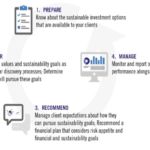Inside-Out: The Good and the Bad of insight2impact
Does this situation sound familiar? A development program runs its course, generating lots of intriguing insights and impacts – and experiencing its fair share of setbacks. These successes and failures could provide useful guidance to other initiatives. But once the program is over and the funders and implementers have moved on, these insights end up languishing in a sparsely read report, buried in the back pages of a website.
That’s precisely the scenario Cenfri and FinMark Trust want to avoid with their insight2impact (i2i) program. A global resource center that seeks to improve financial inclusion through the smarter use of data, i2i was launched in 2015, funded by the Bill & Melinda Gates Foundation in partnership with the MasterCard Foundation. As the program wraps up operations, it’s taking innovative steps to ensure that its many insights are actually available to the companies and organizations that could use them. This “Openi2i” initiative will publish these learnings over the course of the coming year, sharing the experiences (both good and bad) of the team and a wide range of partners – including individuals, companies, organizations and other entities – that are leveraging data solutions to advance financial-sector development and increase both inclusion and impact.
As i2i lead Hennie Bester puts it, “My experience has often been, when I’ve looked at program that have run their course, the learning tended to be an afterthought. Through our Openi2i initiative we hope to change this dynamic. We want to put our learnings out there now and generate interest through them. It’s a bit of an experiment – we’ll see what comes out of it, and whether the market is ready for something like this.”
We’re excited to announce that NextBillion will be playing a role in this process: We’ll be partnering with i2i for the next year, to help share the learnings generated by the program. We’re particularly intrigued by i2i’s willingness – indeed, eagerness – to frankly discuss not just successes, but challenges and failures too. We agree with their belief that this sort of discussion often provides the most valuable insights to others working on the ground in emerging markets.
In the Q&A below – the inaugural post in this partnership – Bester discusses the program in greater detail and explores data’s evolving role in financial inclusion. Stay tuned for further insights from i2i in the coming months – bookmark their series page for updates, and follow them on Twitter at @i2ifacility
James Militzer: Talk a bit about how you came to work in this space.
Hennie Bester: I’m a lawyer by trade, economist by study, spent years in representative politics and now split my time between farming in the middle of the desert in South Africa and leading insight2impact – a programme jointly hosted by FinMark Trust and Cenfri and sponsored by the Bill and Melinda Gates Foundation and the Mastercard Foundation.
I entered the development space in the early 2000s through FinMark Trust, a UK AID-funded development entity in South Africa testing a very innovative concept to grow financial inclusion by making the existing financial sector work better – as opposed to just smaller microfinance institutions, which had been the norm up to then.
JM: So how did you become involved with insight2impact?
HB: I joined Cenfri as a technical director in 2009 and worked largely as a specialist on some of our big projects.
Four or five years ago, we (Cenfri and FinMark Trust) were collaborating on a programme with the UNCDF – Making Access to Financial Services Possible (MAP). The purpose of the programme was to respond to what, in my view, was a little bit of a crisis of confidence in financial inclusion as a policy instrument.
What we found was that the impact of financial inclusion was being held back because people were not using their newly minted formal financial services – the key for adults to get value from them!
So, when the Gates Foundation heard about our research they were interested, as they were also in the process of looking for new ways of understanding what we were achieving and not achieving through financial inclusion. The Mastercard Foundation was also in discussions to create a centre to support financial service providers looking to use data to advance financial inclusion in Africa, and as ambitious development experts we agreed to take both on.
So started our five-year journey for quite a complex multi-year engagement with two funders across two hosts, delivering on five work streams.
About two years ago, I was given the opportunity to take over as lead over the programme – a great privilege.
JM: And what was your initial focus on insight2impact?
HB: I was part of the team that developed the original proposal and had led some of our early work on improving how we measure financial inclusion, so I had some context to i2i, but when I took over as programme lead, the first thing I realised was how much had changed. Five years ago, it was unbelievably hard to get a financial institution to even have three technical specialists working on developing data capacity, let alone data capacity focused on financial inclusion.
But with the rapid and complex changes brought about technology innovations and improved connectivity in emerging markets, a funny thing happened to financial inclusion. It went from struggling to gain currency as a development tool to being a prerequisite for digitisation – for which most African public and private institutions we work with now have some sort of strategy.
JM: How have these changes shaped insight2impact?
HB: Various forces had come into play that completely reshaped the financial inclusion debate and cast the policy objectives of financial inclusion in a completely different light. It’s created new opportunities and also new risks. And that’s given us a new impetus and set of opportunities for the last 18 months of the programme which we could not have anticipated at the outset, but that’s really exciting.
As with MAP, what we found was different than what we were initially searching for – a common theme in my experience in the development space. But what you find can often be more impactful that what you are looking for, if you have the space with your donors to respond to these new opportunities.
JM: Talk more about some of these opportunities for i2i.
HB: One of the opportunities I am most personally excited for with this new drive is the opportunity to share some of the learnings from managing a multi-year programme across multiple geographies and partners, against the backdrop of an increasingly complex and evolving external environment. We’ve learned a lot – not all good – I think we have some learning to offer for others working in this space.
My experience has often been, when I’ve looked at programmes that have run their course, the learning tended to be an afterthought. Through our Openi2i initiative we hope to change this dynamic. We want to put our learnings out there now and generate interest through them. It’s a bit of an experiment – we’ll see what comes out of it, and whether the market is ready for something like this.
To take one example of how new learnings can change a programme’s assumptions, I was a long-time advocate of demand-side data. I even sat in a roundtable discussion on the measurement of Financial Health in Washington D.C. and told them they couldn’t do anything without it. While there are elements of that opinion that I still stand by, our transaction data work in Nigeria taught me that from a policy-making perspective and even from an indicator perspective, the reliance on demand-side surveys should come with a health warning – these surveys were significantly underreporting (by more than 60% on some indicators) financial usage – the very problem we set out to solve!
Another example was our work on digital platforms. We entered the space because we were struggling to get financial institutions to use, generate and structure their data. It was more of a mess than we were prepared for. Digital platforms had data and were seeming to use it and we wanted to access the space to understand the opportunities. So we created a database on digital platforms as an entry point into the discussion and to draw in relevant actors.
What we quickly realised was that these digital platforms had a new set of market and competition dynamics that was not only shaping financial services usage, but also governance and real economy outcomes. For example, in our analysis of transaction data in Mexico, we found that about 20% of the card platform data we analyzed were transactions with digital platforms, and more than 98% of those transactions were with off-shore platforms. This has two potential knock-on effects that could be more impactful than inclusion – the disruption of local firms as money from adults in Mexico is being channeled outside of the country rather than back to Mexican firms, and the circumventing of governments who cannot hold these offshore platforms accountable.
So rather than inclusion being the objective for us, the shift has focused from inclusion and usage to preparation – ensuring that adults and economies in Africa are prepared for the latest wave of change.
JM: Are there any other insights from i2i that you’ve found particularly significant, and if so, how do you hope those insights will impact the sector, in terms of programming or product design?
HB: One of the most insightful learnings for me was in the changing innovation space across Africa. While the governments were still figuring out how to work together, young people and innovation hubs across Africa were connecting at the grass-roots level – forming new networks. We got to ride on the wave of this energy through our DataHack4FI initiative, and I think we have benefited greatly from understanding the cross-country and national dynamics for facilitating innovation on the continent.
JM: Tell us more about the Openi2i partnership with NextBillion, and why you launched it.
HB: Well the reason we have partnered with you – as you know – is to share these learnings openly. Earlier this year we were inspired by Gavin Starks – founder of the Open Data Institute in the U.K. – who gave a keynote address at one of our strategy retreats and told us to be fearless.
We decided the best way to be fearless was to put our money where our mouth is and share our learnings as widely as possible – no matter how ugly.
I think our biggest successes have really been when we’ve reached out to other people and started to learn jointly, as we’ve tackled some of the questions in this very new field of data for good in Africa. Openi2i is saying, “We’ve had the privilege of working in this, let’s put it out there and hopefully, openness will catalyze other people to share their learnings.”
And we also hope we can use Openi2i to honor the contributions of these partners from who we have learned so much, the great work done by our two funders, and by multiple institutions – particularly across Africa, but also beyond.
James Militzer is an editor at NextBillion.
Photo: insight2impact lead Hennie Bester, courtesy of i2i.
- Categories
- Finance




